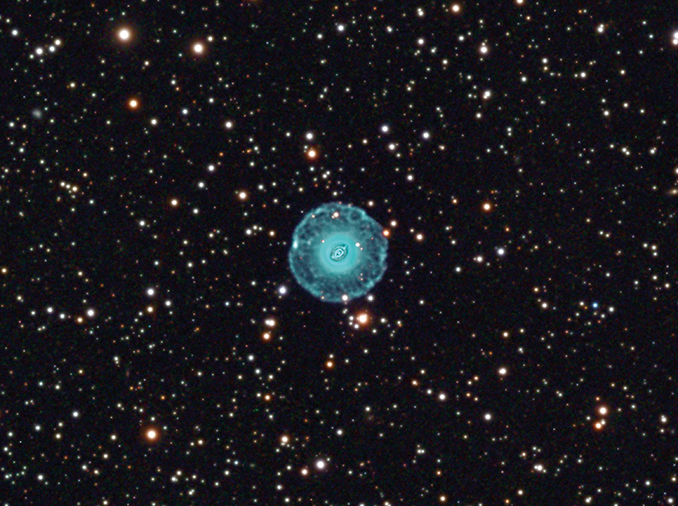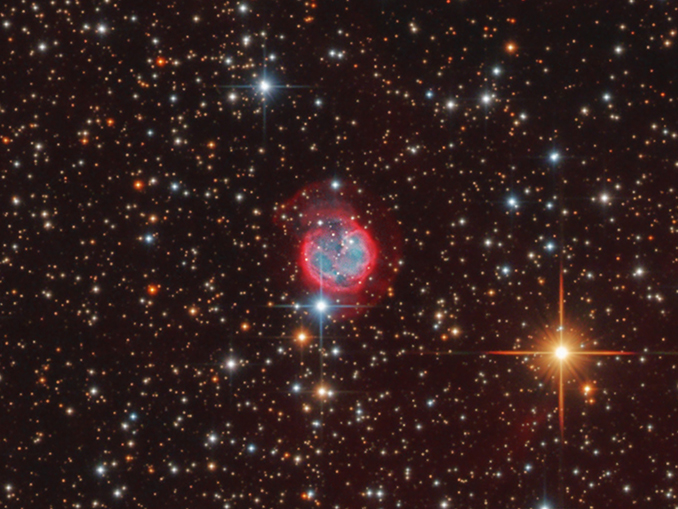
Planetary nebulae are arguably the most popular of all deep-sky objects. The late-summer sky is a rich source for harvesting these pretty, diverse and colourful nebulae, with the territory of Cygnus, the Swan, leading the way in bright targets.
How to observe
Cygnus rides high at late-evening on nights in early September. The combination of this advantageous positioning and the return of darker skies (incidentally the Moon is new around mid-month), is ideal for tracking down some of Cygnus’ plentiful planetaries.

NGC 6826: The Blinking Planetary
NGC 6826 (Caldwell 15), the curious ‘Blinking Planetary’ shining at magnitude +8.8, is Cygnus’ most well-known planetary. Under a typical UK sky, perhaps a 150mm (six-inch) scope is a prudent choice to see how it’s gained its nickname.
Using averted vision to look just past it, the planetary’s surrounding nebulosity will ‘pop’ into view. When looking straight at it your view will be dominated by a bright inner shell and its magnitude +10.7 central star. By alternating between averted and direct vision, the nebula appears to blink, popping in and out of view. NGC 6826 lies just over five degrees north of magnitude +2.9 delta (δ) Cygni at RA 19h 44m 48s, Dec +50° 31’ 31”..
NGC 7008: the Foetus Nebula
NGC 7008 has gained the moniker of the Foetus Nebula from its striking appearance in modern deep-sky images. Lying over 12 degrees east and slightly north of the ‘Blinking Planetary’ (RA 21h 00m 33s, Dec +54° 32’ 32”), this magnitude +10.7 planetary is in range of a 150mm telescope which can reveal its smooth oval shape. Upgrading to a 250-300mm (10- to 12-inch) ’scope with an O-III filter operating at high magnification may reveal some mottling.


Best of the rest
NGC 7026 is an eleventh-magnitude object planetary nebula spanning 27” x 11” that can be picked up in a 150mm telescope lying 12’ south of fifth-magnitude 63 Cygni (RA 21h 06m 18s, Dec +47° 51’ 08”). NGC 7048 is a different beast, an annular planetary that appears almost perfectly circular. You made need the light-grasp and resolving power of a 250mm (10-inch) telescope to snare it lying about halfway between the North American Nebula and Messier 39 (RA 21h 14m 15s, Dec +46° 17’ 15”). In a similar vein to NGC 7048, imagers will revel in data from ring-shaped NGC 6894, which is located six degrees east of the Veil Nebula (RA 20h 16m 24s, Dec +30° 33’ 51”).





